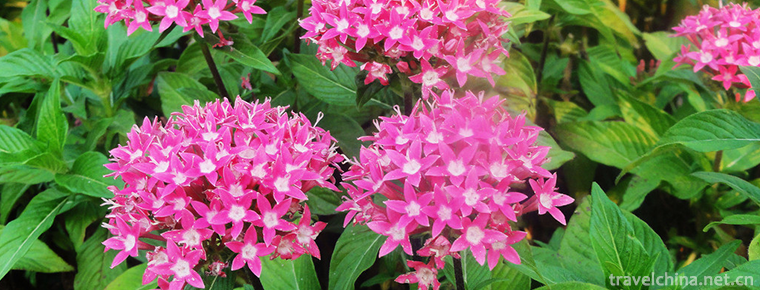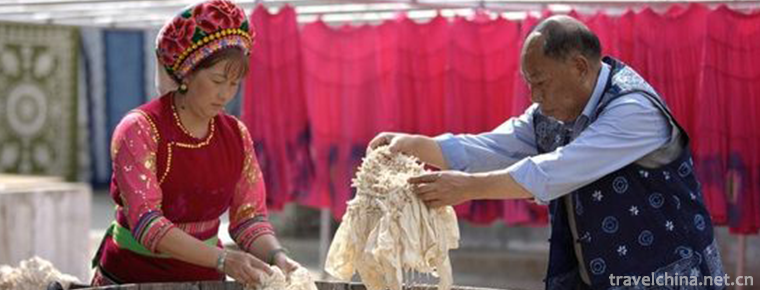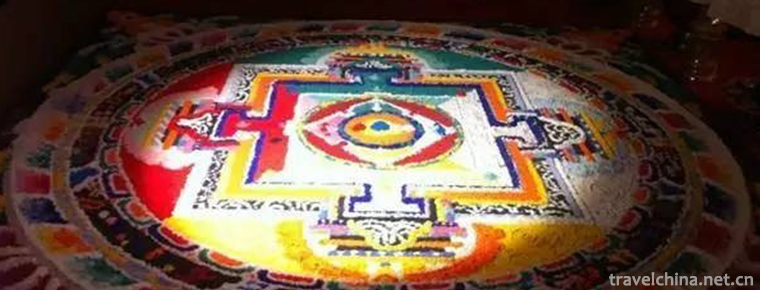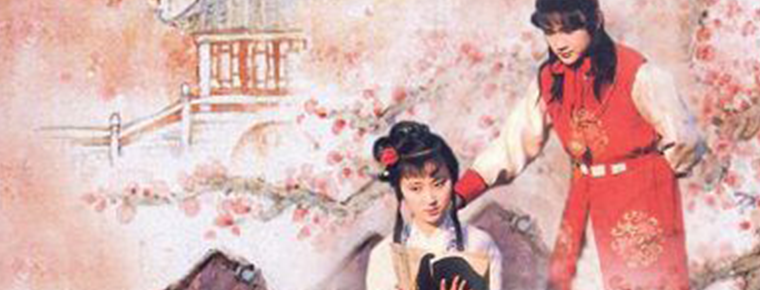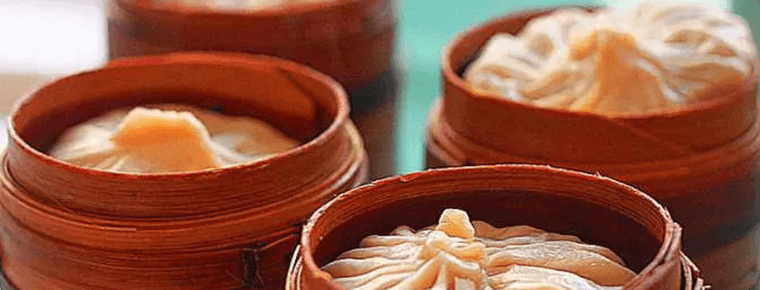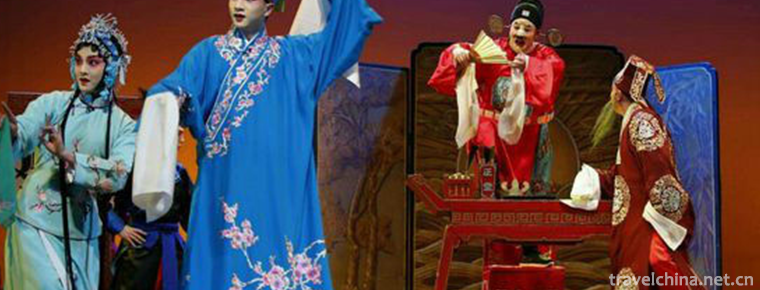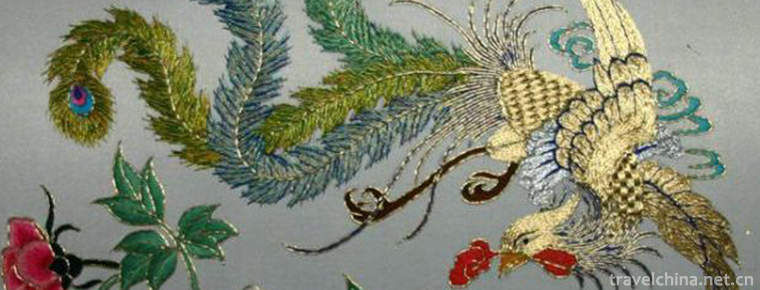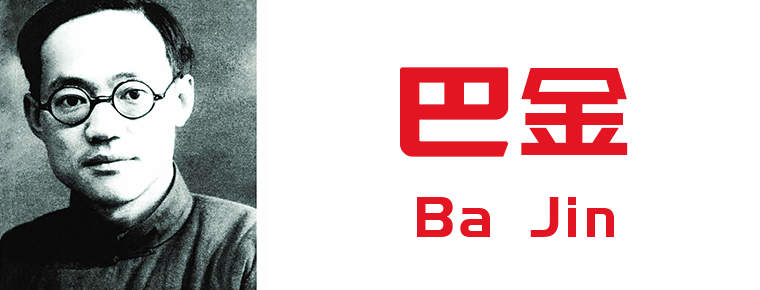Nu Fairy Festival
Nu Fairy Festival
Fairy Festival is a traditional folk festival of Nu people in Gongshan area of Yunnan Province. The local flower festival, also known as the Flower Festival, is held on March 15 of the lunar calendar every year. At that time, the caves with stalactites will be chosen as fairy caves by villages, and people will take sacrificial supplies to worship them one after another. The Nu Fairy Festival, also known as the "Flower Festival", is a traditional folk festival of the Nu people in Gongshan, Nujiang Lisu Autonomous Prefecture, Yunnan Province. It is mainly spread in the Nu people's inhabited area of Bingzhong Luo Township, Gongshan County. It is held on March 15 of the lunar calendar every year and lasts for three days. Festival activities include offering sacrifices to fairy caves and greeting holy water, singing and dancing for happiness, sports and so on.
On May 20, 2006, the "Nu Fairy Festival" declared by Dulong Nu Autonomous County in Gongshan, Yunnan Province, was approved by the State Council and listed in the first batch of national intangible cultural heritage list.
Festival History
Origin of Festivals
The origin of the Nu Fairy Festival is derived from primitive worship, while the other is a relic of the early maternal clan of the Nu nationality in respect of women. Nu people believe in fairies to pray for peace.
Legend has it that the fairy people hang on is a beautiful girl named Anchor in Jimude Village. She invented the bamboo slippery rope flying across the Nujiang River, splitting the Gaoligong Mountains with great difficulty, and also drew sweet spring water for people on the Gaoligong Mountains, which irrigated the perennially arid and barren Nujia Villages, turned the rocks on both sides into fertile soil and the barren mountains into green wilderness. The name of Axiang girl has spread all over the Nujiang River. People call her a fairy and adore her very much.
The beauty of Anchor made the hateful head feel bad. The head wanted to take over Anchor. Anchor had to hide in the deep mountains and hide in the caves of Gaoligong Mountain. The head man did not give up his heart and went after the cave entrance to ask the Anchor girl to come out and marry him. Girl Anchor did not promise him. On the fifteenth day of the fifteenth lunar month, the head man set fire to the girl Anchor and burned her to death in the cave.
The fifteenth day of the lunar calendar falls in Yangchun and March. Flowers blossom on both sides of the Nujiang River. In order to commemorate this smart, capable and strong girl, the Nu people designate this day as the Flower Festival. They worship her on this day every year and gradually form the fairy Festival custom.
One of the legends
Legend has it that the fairy named A Ying, who was hanged by people, hid in a cave and became a stone statue in order to escape the forced marriage of the head man. According to legend, it happened to be the fifteenth day of the third month of the lunar calendar. In memory of this smart, capable and strong girl, people worship her every year on this day. Fairy Festival is mainly to commemorate the legendary clever and capable fairy Anchor girl. Legend has it that Axiang lived in Jimude Village. She invented the bamboo strips that allowed the local Nu people to cross the Nu River. She also brought sweet springs from Gaoligong Mountain. In order to escape the forced marriage of the leader, she hid in a cave and became a stone statue. Legend has it that the day of her death was the 15th of March in the lunar calendar. Therefore, from the second year after her death, Nu people held worship activities for her on that day. According to the fourth "public opinion" record in the Records of Collecting Grass Pu Barrels along the Border, there is a famous cave of stone cave on the top of the back hill of Dala in Bingzhong Luo. It is seventy or eighty feet square, deep and bottomless, with soil nests in the cave. It is not easy to adopt this cave because of its thick white strength. Every year on March 15, all the foreigners, men and women, and all the wine, meat and food, troop to Chaoshan. After sleeping out all night around the cave, the next day, the former holds a flag, the latter knocks a gong, sings and drinks along the way, and still drinks in groups after arriving home. With the development of Fairy Festival, there have been some changes in the form of organization. Besides the traditional projects, some new contents have been added.
Fairy Festival begins on March 15 of the lunar calendar every year and lasts for three days. Festival activities include three main activities: sacrificing Fairy Cave and greeting holy water, singing and dancing, praying for blessings and sports competitions. Every year, there are thousands of participants in fairy's day. Everyone wears Festival costumes, gathers in front of fairy's cave with sacrifices, sacrifices and wine from surrounding villages. Lamas of Puhua Temple beat drums and chant sutras. Everyone kowtows and presents flowers, seeds and wine. Legend has it that the stalactites transformed by Anchor will flow out of the cave, namely "holy water". Young women will enter the cave to receive Holy water. Then people will drink together, sing and dance, and stay up all night, praying for fairies and mountain gods to bless the well-being and happiness, five valleys and six animals to flourish. At the same time, national sports activities such as crossbow shooting, race and wrist wrestling are also carried out.
Fairy Festival is the most grand traditional festival of Nu nationality. It contains rich culture of Nu nationality. Nu folk dances, legends and music are preserved and displayed in the festival. Its festival activities radiate to all Nu villages in Luoxiang area of Bingzhong County, with a broad mass base, reflecting the concept of natural belief and reproductive belief, and with the characteristics of Tibetan Buddhism, which is of great value to the study of the historical and cultural changes and national spirit of Nu nationality. Nu nationality is one of the minority nationalities in China. Traditional culture is easily influenced by external factors. The inheritance of Fairy Festival was interrupted for a time, and it was not restored until after the reform and opening up. The traditional culture of Nu nationality embodied in Fairy Festival is still facing severe impact from foreign cultures. When offering sacrifices, it is necessary to light up smoke, recite congratulations from the main worshippers, and drum and chant sutras. Then everyone kowtowed to pray for the fairy's protection. After the sacrifice, families held banquets and drinks, while young men and women dressed in festival attire went to an open area for archery competitions, and held various material exchange rallies to attract the local people of all nationalities to buy.
Legend II
Legend has it that long ago, there was a girl named A Qian in Nujia Mountain Village. She was not only beautiful, but also smart and clever. One day, when she was weaving at home, she saw a spider under the eaves weaving a web in the sky. Inspired by this, she invented the slip rope. Together with her fellow villagers, she cut the golden bamboo and weaved it into slip ropes, which were erected on the torrential Nujiang River and solved the difficulty of crossing the river for the fellow villagers. Anchor invented the slip rope and was known as a fairy. When the slave owners knew it, they sent someone to propose marriage, which was rejected by Anchor. The slave owner was so angry that he sent his family to rob his relatives. Ah Ying knew it and hid in a stalactite cave in the deep mountains. Slave owners in turn ordered the family to set fire to the mountains, and Anrong died unfortunately. To commemorate her, the Nu people designated the day when Anchor died as "Flower Festival".
Festival activities
Major activities
Early in the morning of the festival, the villages chose the stalactite caves as fairy caves. Nu people dressed up, took ready sacrifices and picnics, held bunches of flowers, went to the caves near the villages to worship the fairy in their minds, Anchor, and held dinners and various entertainment activities. People eat and drink, sing and dance, and the whole valley is immersed in a simple and solemn festival atmosphere.
Because some Nu people believe in Tibetan Buddhism, there are many sutras and Thangka hanging around the altar in front of the fairy cave. The altar was filled with various sacrifices, and on both sides of the altar sat the old man in red and yellow uniforms. They play suona, drums, gongs and chants. Beside the altar, there is a 3-meter-high incense burning platform with pine branches, flowers and colorful flags, and a long bamboo pole with an old corn. Pine branch symbolizes good luck and evergreen forever. Corn symbolizes rich grain and more than one year. Flowers are dedicated to the fairy Antler.
In the sound of drums and music, pilgrims hold flowers, walk around the altar and incense burning platform, and insert flowers in the bamboo poles of incense burning platform. Later, people went to the fairy cave, offering flowers and drinking fairy water to the fairy.
After the whole sacrificial ceremony, families held banquets and drinks. People sat around the hillside with their families or relatives and friends. They put the prepared food on the floor with pine needles and ate and drank. They sang while eating and drinking, and danced happily when they rose. The hillside was full of primitive and solemn festival atmosphere. Young men and women wear festive attire and go to an open place for archery competitions. At the same time, various material exchange rallies will be held to attract the local people of all nationalities to come and buy. In the evening, young men and women set off bonfires. By the campfire, they sang love songs, danced happily and stayed up all night.
With the development of the times, the ritual of sacrificing fairies has gradually faded away. Singing and dancing for happiness and sports competitions have become the main activities of fairies'festival.
Celebration
When offering sacrifices, smoke should be lit up, and the main worshippers should recite congratulations, as well as drums and sutras. Then everyone kowtowed to pray for the fairy's protection. After the sacrifice, families held banquets and drinks, while young men and women dressed in festival attire went to an open place for archery competitions.
Meanwhile, a variety of material exchange gatherings are held to attract the local azalea blooming season, and people will also present a bunch of azaleas for the "fairy".
Inheritance Significance
Nu nationality is one of the minority nationalities with a small population and living across the border in China. Its traditional culture is vulnerable to external factors. The inheritance of Fairy Festival was interrupted for a time, and it was not restored until after the Third Plenary Session of the Eleventh Central Committee. The social foundation of Nu Fairy Festival is quite extensive. It reflects the consciousness of primitive religion, especially natural worship and reproductive worship, and is influenced by Tibetan Buddhist culture. It is of great value to the inheritance of Nu traditional culture.

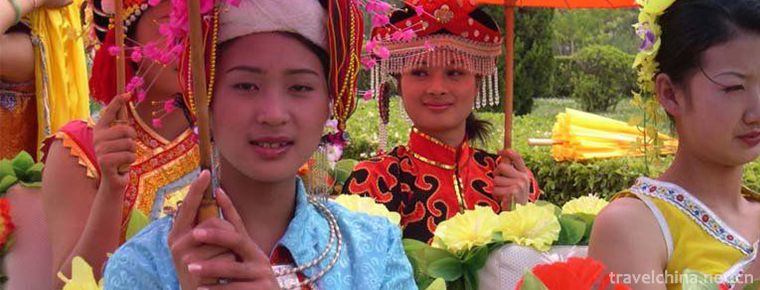
-
Castle Peak Pass Scenic Spot
Qingshankuan is located in the north of Qianxi County, 40 kilometers away from the county town, located in the Yanshan branch, the hinterland of Daqingshan Mountain..
Views: 192 Time 2019-02-07 -
Xishuangbanna Tropical Flower Garden
Xishuangbanna Tropical Flower Garden is located in Yunnan Institute of Tropical Crop Sciences, Jinghong City, Xishuangbanna Prefecture, Yunnan Province. It covers an area of 80 hectares and is one of .
Views: 148 Time 2019-02-25 -
Bai nationality tiedyeing skills
Bai tie-dyeing technology, the local traditional textile dyeing technology in Dali City, Yunnan Province, is one of the national intangible cultural heritage..
Views: 210 Time 2019-04-03 -
Painting of Painted Sand Tancheng
He said that if we compare life to a picture scroll, if the world wants to be detached from things and hearts, should it also laugh away the glory or frustration,.
Views: 360 Time 2019-04-04 -
Legend of Cao Xueqin
The legend of Cao Xueqin refers to the story that the common people in the place where Cao Xueqin lived in his later years respected him and processed his deeds into a story..
Views: 111 Time 2019-04-15 -
tea and pastries making skills
Tea making skills, Yangzhou City, Jiangsu Province, local traditional handicraft, one of the national intangible cultural heritage..
Views: 155 Time 2019-04-15 -
han opera
Guangdong Hanju Opera, formerly known as "Ran Tan", "Waijiang Opera" and "Xingmei Hanju Opera", is one of the Hakka Opera genres in Guangdong Province.
Views: 145 Time 2019-05-01 -
Han Embroidery
Han embroidery, one of the traditional embroidery techniques with Chinese characteristics, is based on Chu embroidery, which combines the merits of various .
Views: 172 Time 2019-05-02 -
Legend of Yang Jiajun
The Legend of Yang Jia Jiang is a kind of literature expressed by folk rap in Northwest China. The story of the generals of the Yangs has a long history. It began to circulate as early as the Song Dyn.
Views: 124 Time 2019-07-11 -
Ba Jin
Ba Jin (November 25, 1904 - October 17, 2005), male, Han nationality , Sichuan Chengdu Man, his ancestral home Zhejiang Jiaxing 。 Ba Jin's original name Li Yao Tang And another pen name, Pei pole, bli.
Views: 269 Time 2019-09-06 -
Geomorphological characteristics of Mianyang
The terrain is high in the north and low in the south, and the height difference is large. The northwest of Mianyang City is located in the eastern edge of the Qinghai Tibet Plateau, with high terrain and overlapping peaks. The southwest part belongs.
Views: 108 Time 2020-12-14 -
Meishan scenic spot
Meishan has a long history and culture and many cultural relics. Meishan County, where the municipal government is located, has a history of 1505 years. It is a famous town of Sansu culture. There are 2 provincial cultural relics protection unit.
Views: 339 Time 2020-12-18

